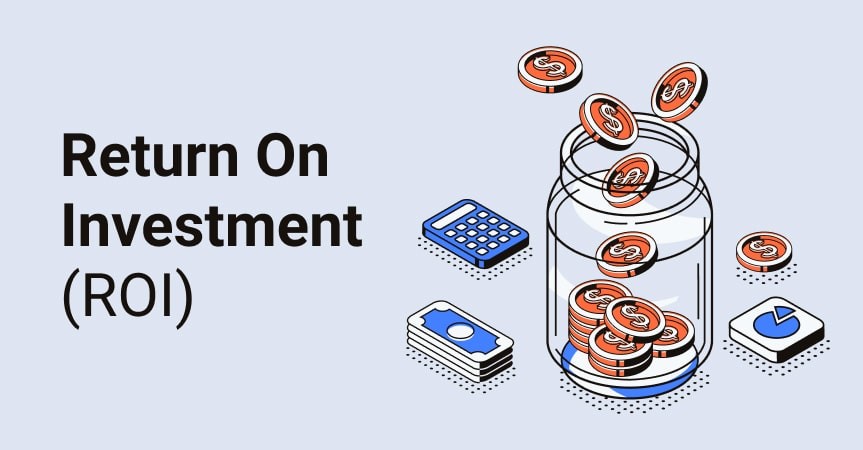Have you ever wondered how the digital landscape is dominated by SaaS, or Software as a Service? The industry saashas transformed the way businesses operate, making complex software accessible and affordable to all.
We’ve entered an era where even small startups can harness powerful tools once reserved for tech giants. Thanks to SaaS companies like Salesforce and Microsoft.
But what’s behind this meteoric rise?
In this deep dive into the world of SaaS, we’ll unpack everything from its growth trajectory to key players that rule the roost. You’ll learn about different types of SaaS models – horizontal and vertical – each with their unique advantages. We also shed light on various applications within the market such as CRM and HRM.
Understanding the SaaS Industry and Its Growth
The SaaS industry, or Software as a Service, has seen explosive growth over recent years. According to Statista, its market size was 157 billion U.S. dollars in 2023, which is double the value from 2014.
Global data indicates that this increase isn’t slowing down either. The surge is largely driven by businesses transitioning to cloud-based solutions for efficiency and scalability.
The market dominance of major players like Salesforce, Microsoft, and IBM further fuels this momentum. They’ve leveraged their vast resources to create robust SaaS applications meeting diverse business needs – everything from project management tools to comprehensive CRM systems.
A pivotal factor behind these SaaS companies’ success lies in their customer-centric approach. Firms are realizing that fostering strong customer relationships through superior service can significantly reduce churn rate – a common challenge within the industry.
Innovative products tailored towards improving customer experience have become critical assets for these firms – making them some of the largest SaaS entities globally with impressive market caps. Their offerings not only help manage customer data but also empower teams by automating repetitive tasks; saving time spent on manual work while boosting productivity simultaneously.
Despite already being one of the world’s largest industries though, there’s still plenty more room for expansion within ‘industry saas’. It continues evolving rapidly as new technologies emerge such as AI (Artificial Intelligence) & ML (Machine Learning).
This relentless pursuit towards innovation underpins why it remains an attractive sector both investors looking at business models promising high cash flow returns & budding entrepreneurs wanting to carve out their own success story in the SaaS market.
Types of SaaS Models and Their Dominance
SaaS models have been on the rise, largely due to their scalability and cost-effectiveness. But, not all SaaS models are the same. Let’s break down two major types: horizontal and vertical SaaS.
Exploring Horizontal SaaS
A horizontal SaaS model serves various industries with a wide range of functions. Think about tools like Slack or Zoom that cater to multiple sectors regardless of the industry type.
The beauty here is its broad market reach which leads to greater potential for growth rate in terms of customer data collection and cash flow generation.
Vertical SaaS – A Closer Look
In contrast, vertical SaaS focuses on specific niche industries offering specialized solutions tailored for them alone such as Veeva Systems in healthcare or Procore Technologies in construction management saas applications.
This concentrated method enables these companies to form stronger customer bonds as they comprehend their customers’ one of a kind necessities more profoundly than a catch-all software solution could ever wish to accomplish.
Gartner predicts that post-pandemic spending on cloud infrastructure will continue climbing up making it evident how dominant both these models have become.source.
| Type of Saas Model | Main Advantage |
|---|---|
| Horizontal SaaS | Broad market reach |
| Vertical SaaS | Focused customer relationships within a specific industry. |
The choice between horizontal and vertical saas largely depends on your business model. The best part? There’s room for both in the ever-expanding universe of cloud service offerings.
Key Categories of Applications within the SaaS Market
The SaaS market is teeming with a variety of applications designed to streamline business operations. Applications such as CRM, HR, and accounting/billing can be used to streamline business operations.
A Look at CRM Applications
Salesforce, for instance, has revolutionized how businesses manage their customer relationships. Its cloud-based software enables teams to keep track of leads, automate marketing efforts, and offer top-notch customer service.
This sort of SaaS application enhances communication between sales reps and customers while offering actionable insights into buying behavior patterns.
Navigating HR Management Systems
In contrast, HR-focused platforms like Workday have become indispensable in managing employee data. They assist companies in automating repetitive tasks such as payroll processing or time tracking. Such tools not only save time but also reduce potential errors inherent in manual processes.
Diving Into Accounting/Billing Solutions
Beyond that, there are solutions like QuickBooks Online that focus on finance-related tasks. These systems make it easier to send invoices, track expenses, and generate financial reports – all crucial elements for effective cash flow management.
Although each category serves different needs within an organization’s ecosystem, they all share one common goal: simplifying complex procedures so businesses can run more efficiently.
Take the necessary steps to ensure that you select a product which meets your exact requirements, even if similar functions are served by different products.
Impact of COVID-19 on The Demand for Saas Solutions
The COVID-19 pandemic has significantly shaped the SaaS industry, spurring an unprecedented demand for SaaS solutions. This sudden shift to a remote workforce globally necessitated new ways of working, leading businesses to adapt quickly.
According to Gartner, the market size increased as companies needed more robust tools for collaboration and project management. They also required cloud infrastructure that could handle surges in use while maintaining excellent customer service.
To accommodate these needs, many turned towards software like Microsoft Teams or Zoom Video Communications. These platforms allowed teams scattered across different locations to collaborate effectively, managing tasks and keeping projects on track without losing crucial customer data.
This surge wasn’t just limited to communication tools; HR SaaS products saw increased usage too. Businesses had a newfound need to manage their human resources digitally due to remote work setups. Applications assisting with recruitment processes, employee performance tracking, and resource planning became essential elements in business operations during this period.
In response to changing consumer behavior patterns brought about by the pandemic, some vertical SaaS companies shifted gears too—developing specific applications tailored toward industries hit hardest by COVID-related disruptions such as hospitality or travel services.
Growth rate-wise, most providers experienced an uptick but none quite like Zoom—a company expecting between $4.53 billion and $4.55 billion in revenue for fiscal year 2023.
-Zoom’s Success amidst Pandemic
While the circumstances were unfortunate, COVID-19 has undeniably played a pivotal role in shaping demand and driving innovation within the SaaS industry. It is evident that these software solutions will persist to be an essential component of how companies carry out their operations, no matter the circumstances.
Exploring the Future of the SaaS Industry
The SaaS industry, an essential component in today’s digital landscape, is on a path to substantial growth. With estimates projecting it to be worth roughly $195 billion U.S. dollars by 2023, its future seems promising.
Emerging trends within this space suggest an evolution towards more tailored solutions. Companies are focusing on enhancing their services for better user experiences and stronger customer relationships – key aspects that help them stand out in a saturated market.
This shift isn’t surprising when we consider how integral SaaS products have become across various industries; from project management systems helping businesses streamline operations, to HR software simplifying repetitive tasks – these tools are indispensable.
Statista’s recent report highlights this growth trend and showcases why companies globally are adopting the SaaS model at such a rapid pace. One major reason being cost-effectiveness as business owners no longer need significant upfront investment for software purchases or maintenance – they simply pay as they go.
An interesting facet of the evolving industry is also seen in vertical SaaS companies that provide specialized solutions targeting niche sectors unlike large horizontal players who cater to broader markets with generic applications.
The expansion isn’t limited only geographically but technologically too. Cloud infrastructure continues advancing at breakneck speed while video communications like Microsoft Teams have changed our approach towards work during unprecedented times.
Cash flow, another vital metric in any business model has been positively impacted due to recurring revenue streams resulting from subscription-based models which significantly reduces churn rate and enhances predictability of income.
Overall, considering current market dynamics and innovation driving technological advancements within this sphere, the future of SaaS looks both exciting and promising.
Key Takeaway:
edge. They’re designed to cater specifically to industry needs, giving businesses a competitive advantage. So it’s clear that the future of SaaS is bright and booming with opportunities.
Successful Strategies for SaaS Companies
Gaining momentum is a key goal for any enterprise, but particularly so in the SaaS sector.
To survive and thrive, SaaS companies must achieve annual growth rates greater than 20%.
Case Study – HubSpot’s Marketing Hub
Take a leaf from successful companies like HubSpot’s Marketing Hub, awarded one of G2’s Top 100 Highest Satisfaction Products in 2023.
Their success lies not just in offering a powerful marketing toolset, but also providing exceptional customer service to build strong customer relationships.
This winning strategy includes elements such as excellent product management that ensures their saas product stays relevant and meets user needs.
A robust CRM system also plays an essential role, allowing them to manage customer data effectively.
It doesn’t stop there.
They use insightful data analysis techniques to lower churn rate and increase market share – key factors driving impressive growth rates.
Innovation is another cornerstone of their approach.
By continuously adding new features (add products), they ensure their software solution remains competitive.
Moreover,
they’ve harnessed cloud infrastructure technology,
which allows seamless collaboration between teams,
and provides cost savings that contribute positively towards cash flow.
Of course,
this wouldn’t be possible without competent HR practices facilitated by HR saas tools
that help hire talent who can deliver these strategies successfully.
Their focus on automating repetitive tasks using AI technologies has significantly saved time spent on manual workloads
improving productivity levels within the organization.
So what’s the takeaway from this?
Implementing successful strategies such as these, combined with a robust SaaS solution,
Let’s boost your company to reach its goals. Let’s collaborate to bring about fantastic results.
Zoom – A Case Study in Successful Saas Implementation
Zoom Video Communications, a leading name in the SaaS industry, is an epitome of successful SaaS implementation. Zoom’s video conferencing platform became indispensable during the pandemic, providing a lifeline for businesses to operate remotely.
The secret behind its success lies not just within the technology but also their innovative business model and impeccable customer service. Let’s dig deeper into this fascinating journey.
A Booming Market Cap Amid Pandemic Crisis
The COVID-19 crisis proved to be a boon for Zoom as it witnessed exponential growth. This sudden surge was due to remote work policies adopted worldwide, driving up demand for efficient video communications tools.
In response to this increased usage, they ramped up their cloud infrastructure while maintaining seamless user experience across their global customer base.
Maintaining High-Quality Customer Service During Rapid Growth
Growth often poses challenges on the customer service front. But Zoom managed it efficiently with its dedicated customer service teams who ensured all user queries were resolved promptly despite soaring user numbers.
This emphasis on stellar customer relationship management (CRM) played an instrumental role in enhancing trust among users which led them from being temporary users to loyal customers eventually contributing towards long-term revenue generation.
Billion Dollar Revenue Forecast For Fiscal Year 2023
Predicting future trends accurately is critical for any SaaS company’s growth strategy. Zoom is no exception to this rule.
Reports suggest that Zoom anticipates an income of between $4.53 and $4.55 billion in 2023, demonstrating its successful enterprise plan and customer maintenance plans.
Innovative Features Ensuring User Stickiness
To ensure user stickiness, Zoom continues to innovate by adding new features that improve the overall user experience while also solving their problems effectively.
The success of any SaaS product largely depends on how well it can retain users over time – a factor where Zoom has been particularly successful due to its relentless focus on customer needs.
Key Takeaway:
Zoom’s phenomenal growth in the SaaS market demonstrates how an inventive business model, top-notch customer service, and constant innovation can fuel incredible expansion. Their strategy has enabled them to handle the surge in demand during the pandemic, maintain high-quality experiences for users worldwide, and project revenues of billions for 2023. By never taking their eyes off what their customers need most, they’ve secured a sustainable future.
Notable Saas Companies Dominating the Market
SaaS is a thriving industry, and some players have made a significant mark. Here are some of those top SaaS companies that currently dominate the market.
Salesforce, for instance, has built its empire on customer relationship management (CRM). They’ve got an impressive market dominance.
In contrast, Microsoft pivoted to SaaS with their product suite, Office 365. It’s more than just Word or Excel; they’re offering collaboration tools like Microsoft Teams. Their success in this space demonstrates how even established tech giants can adapt to new business models.
A newcomer making waves is Zoom Video Communications. Their video conferencing app became indispensable during COVID-19 lockdowns. Now, it’s hard to imagine remote work without them.
The Role of Specialization in Success
To thrive as a SaaS company today often requires specialization. This could be targeting specific industries or building solutions around unique problems.
An example would be HubSpot who created a niche within CRM focused on inbound marketing tactics – their Marketing Hub stands out among other CRM software due to this specialty focus.
Growth Strategies for Success
No two paths are identical when it comes to achieving growth rates greater than 20% annually in the SaaS world.
Taking advantage of cloud infrastructure allows these companies scalability not seen before while focusing on reducing churn rate ensures continued revenue flow from existing customers.
The key here isn’t necessarily what you sell but rather how well your product meets your customer needs and helps them succeed.
Conclusion
The SaaS industry has undeniably changed the business landscape. It’s allowed even small startups to use powerful tools that were once only accessible to tech giants like Salesforce and Microsoft.
Remember, there are different types of models in the industry saas – horizontal and vertical. Each with their unique advantages, serving various applications such as CRM and HRM. These have become invaluable for businesses across all sectors.
We’ve also seen how COVID-19 impacted demand for Saas solutions, pushing it up due to a shift towards remote workforces.
The future? Expect more growth – a whopping $195 billion by 2023! And remember, key strategies can help SaaS companies achieve this ambitious target.
In essence: adaptability is crucial; innovation is non-negotiable!
If you want to learn more about this, sign up for my newsletter.


